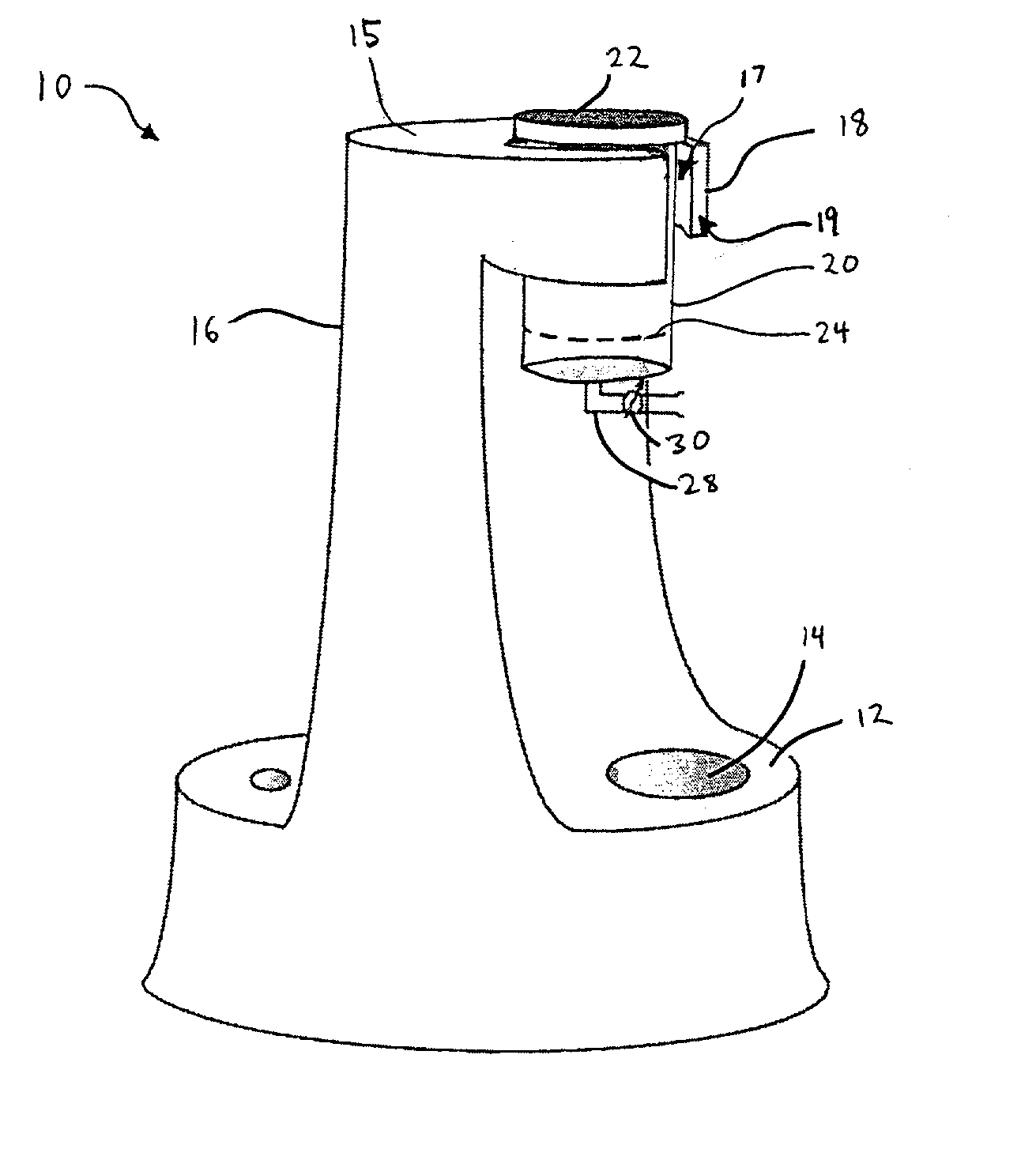Separation of platelets from whole blood for use as a healant
a technology of whole blood and platelet, which is applied in the direction of blood/immune system cells, cardiovascular disorders, drug compositions, etc., can solve the problems of inability to fully utilize growth factor-based wound healing therapies
- Summary
- Abstract
- Description
- Claims
- Application Information
AI Technical Summary
Benefits of technology
Problems solved by technology
Method used
Image
Examples
example 1
Separation of Platelets from Whole Blood
[0070] A separation of platelets from whole blood was carried out by the following process: About 10 ml of whole blood was collected from 4 human subjects by venapuncture into a syringe having a predispensed anticoagulant contained therein. To the collected whole blood was added 100 .mu.M of ADP as an aggregating agent. The whole blood and aggregate combination was mixed in a chamber with a stir bar for 90 sec at 37.degree. C. Once mixing was stopped, the blood with cellular aggregates was filtered through a filter assembly having pore sizes ranging from 20 .mu.m to 100 .mu.m under negative pressure exerted by a syringe. The filtered aggregates were washed with 30 ml of 18.degree. C. saline for 1 minute. Next, the washed aggregates were incubated with a saline-ACD solution at 37.degree. C. with gentle aspiration for 3-5 minutes. The saline-ACD solution having substantially deaggregated growth-factor containing platelets were then collected as ...
example 2
Determination of Platelet Yield
[0072] A platelet recovery assay was performed by placing a dilution of a platelet suspension, prepared in accordance with Example 1, in a hemocytometer where the number of platelets were counted using a phase contrast microscope or with the help of an electronic particle counter. Platelets recovered were compared with platelets recovered using a conventional centrifugation method of the prior art. Hemocytometer counts showed near complete recovery of platelets using the aggregation, filtration, and deaggregation method of the present invention. The results were quantified and are shown in FIG. 5. The waste filtrate from this process contained very few platelets in all cases indicating that aggregation and filtration process was very efficient in harvesting platelets from whole blood. It is worth noting that two of the four subjects that were part of this study were taking aspirin and / or calcium channel blockers (as anti-hypertension medication). Aspir...
example 3
Determination off Unctional Integrity
[0073] To assess functional integrity, platelets recovered in accordance with Example 1 were added to autologous platelet poor plasma, incubated for 15 minutes at 37.degree. C., and the function of platelets assessed in a BIO / DATA turbidometric platelet aggregometer using 50 .mu.M of ADP as the aggregating agent. Platelets recovered by the present invention were compared with platelets in platelet rich plasma obtained by conventional centrifugation. The comparison of platelet function in a turbidometric aggregometer showed virtually identical platelet aggregation profiles between the platelets recovered by centrifugation, and those recovered by the present invention. FIG. 6 depicts these results. This suggests that the functional integrity of harvested and concentrated platelets obtained by the process of the present invention was not compromised when compared to a prior art method.
PUM
| Property | Measurement | Unit |
|---|---|---|
| Time | aaaaa | aaaaa |
| Pore size | aaaaa | aaaaa |
| Pore size | aaaaa | aaaaa |
Abstract
Description
Claims
Application Information
 Login to View More
Login to View More - R&D
- Intellectual Property
- Life Sciences
- Materials
- Tech Scout
- Unparalleled Data Quality
- Higher Quality Content
- 60% Fewer Hallucinations
Browse by: Latest US Patents, China's latest patents, Technical Efficacy Thesaurus, Application Domain, Technology Topic, Popular Technical Reports.
© 2025 PatSnap. All rights reserved.Legal|Privacy policy|Modern Slavery Act Transparency Statement|Sitemap|About US| Contact US: help@patsnap.com



